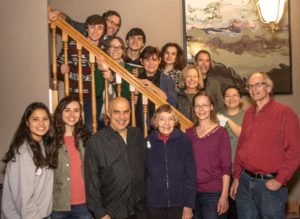Life’s Meaning and Friendship Connections
We are intensely social beings. This is a predicament because it takes a lot of work to maintain social connections and even the strongest of connections can sometimes fail. It’s worth the work and it’s worth the risks, though, because this social predicament offers us our only chance to live a meaningful life.
Many people who are shy or (like me) introverted might be tempted to think that a meaningful life can be sustained by passively observing the world around us. We might be tempted to think that we can retreat into some sort of safe place, somehow living a meaningful life while watching the crazy, beautiful and (sometimes) dangerous social spectacles crisscrossing our space-time at a distance.
But a meaningful life is only possible when we work hard to forge deep vulnerable personal honest connections with others. Life can be meaningful only to the extent that we bravely reach out to others at the risk of failure and rejection.
Our journey is thus a non-stop crisis. The human condition compels us to keep approaching social intersections of danger and opportunity. There is no place to pull over to be neutral. There is no way to fully light up our potential by vicariously living the adventures of others, including the adventures of sports heroes or Hollywood characters. To the extent that we fail to take personal risks of connection, the meaningful life withers. If we had been given instruction manuals at the moment we were born, this would be Lesson One: Maintaining close personal connections with others is a necessity of life, as important as food, water and air. Chapter Two: A Life without close friendships is an emotionally impoverished life. Lesson Three: We will often fail in our attempts to connect with others and when this happen, it will hurt.
Lesson Four is that we can often get up, dust ourselves off and be better and stronger because of failures to connect with others. This “good” type of failure is only possible, however, if we can ridicule and silence voices that tell us to stop taking risks, whether these are voices of other people trying to “help” us or whether we are broadcasting these pernicious voices inside of our own heads.
I’ve been thinking about these things a lot recently. For the past year, I had been in a period of relatively blissful “normal” life, where everything seemed safe and steady, including an ongoing romance. But then a huge wave hit me from behind and everything was instantly upside down. It’s as if I were at a movie theater where the movie screen caught fire and I started thinking: “This incredible CGI makes it look like there is a real fire,” but then I realized it was a real fire. Then the announcer stated: “We’re taking a break from normal life. Good luck to you.”



